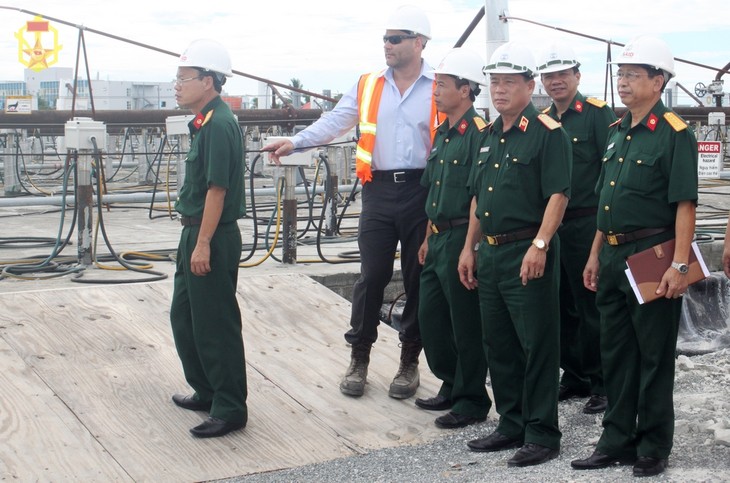(VOVworld)- The Vietnamese government has approved a National Action Plan to 2016 and Orientation to 2030 to deal with toxic chemicals used by the US during the war in Vietnam. The Ministry of National Defense, as the lead agency, will cooperate with Ministries, sectors, and localities to identify and treat heavily-contaminated areas.
 \ \
Officials from the Ministry of Defense and US experts monitor the decontamination project at Da Nang airport |
From 2010 to 2015, reports were made to assess contaminated soil and sediments at 3 hot spots: Da Nang, Bien Hoa city in Dong Nai province, and Phu Cat airport in Binh Dinh province. A number of methods have been devised to treat contamination. At Phu Cat airport, the Ministry of National Defense collected and safely buried more than 7,500 cubic meters of dioxin-contaminated soil removing the airport from the list of heavily-contaminated areas. At Bien Hoa airport, the Ministry is working with the US Agency for International Development (USAID) to assess the environment and formulate a master decontamination plan. At Da Nang airport, the Ministry has cleaned up approximately 45,000 cubic meters of soil. Nguyen The Dong, Head of the Office of Government Steering Committee 33, said: “In Da Nang, we applied In-Pile Thermal Desorption (IPTD) technology for the 1st phase of dioxin treatment. The solution has proved effective. Learning from the experience of Da Nang, the Ministry of Defense will improve the technology and apply it in Bien Hoa. We support this solution.”
Under the Prime Minister’s decision, by 2020, Vietnam will decontaminate 28 hot spots including a number of airports used by the US to spray toxic chemicals in Vietnam. Deputy Defense Minister Senior Lieutenant General Nguyen Chi Vinh described this goal as a crucial but challenging task. He stressed the need to learn from the first phase in order to make the second phase more effective: “Budget, the biggest problem of a project, has been basically settled. Now, it’s the matter of technology, which caused some difficulties at the beginning. But after in the first phase, we learned some useful lessons for the second phase. “
In June, 2016, Vietnam buried more than 160,000 cubic meters of dioxin-contaminated soil and sediment at the Bien Hoa and Phu Cat airports. More than 45,000 cubic meters of soil at Da Nang airport were treated using the IPTD technology. The Ministry of Natural Resources and Environment will work with Vietnamese and foreign experts to further evaluate the technology.